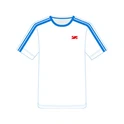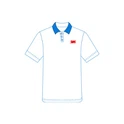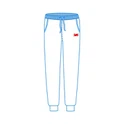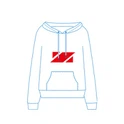1. Selection of sportswear
(1) The selected sports clothing should be suitable for the sports environment in which it is located. When exercising, the human body itself consumes a lot of heat. If the temperature of the exercise environment is high, wearing a loose and light sportswear can help dissipate heat. If the ambient temperature is relatively low, then it is best to choose some clothes that can effectively preserve body heat, make the muscles feel soft and comfortable, and avoid unnecessary physical damage during exercise.
(2) The choice of sportswear also needs to consider the form of exercise. For example, when exercising in the gym, it is necessary to choose sportswear that is more slim. Due to the large number of equipment in the gym, clothes that are too loose and fat are easy to hang on the equipment, causing potential safety hazards. Fit and slim sportswear, you can directly feel the changes in your body during exercise. For example, when doing yoga, playing table tennis and other sports, simple and comfortable wearing will improve the exercise effect to a certain extent.
(3) In the choice of clothing safety, for clothing that is worn on the skin, it is necessary to buy "B" products (clothing products that are in direct contact with the skin, general clothing labels and tags will be marked: "Conform to product technical classification" : Class B); do not buy clothes with a strange smell. Before wearing new clothes, it is best to wash them with clean water.
(4) When doing competitive strenuous exercise, the clothing fabrics should be selected as far as possible with good moisture absorption and perspiration, which can help to disperse moisture and help keep the skin dry and fresh. Generally, chemical fiber fabrics have good moisture absorption and quick drying, and are easy to clean and maintain, so they are a better choice. Compared with chemical fiber fabrics, natural fiber fabrics have better hygroscopicity, and are warmer, lighter and more comfortable. However, when they become wet, the warmth and comfort will deteriorate, so they are suitable for more leisure and less intense sports.
2. Quality identification of sportswear
(1) Appearance and sewing quality
Before purchasing, check the main surface parts of the garment for obvious defects, and whether there is chromatic aberration and slippage in the main seam parts. It is also necessary to check the surface parts of the garment with lining, such as the collar, lapels, bag flaps, and plackets for degumming, blistering or glue leakage. Visually inspect whether the sewing lines of the main parts of the sportswear are straight, horizontal and vertical, whether the seams are flat, and there is no wrinkling phenomenon, carefully observe whether there are needle holes at the seams, and then check whether the symmetrical parts of the sportswear are consistent. There are many symmetrical parts on the clothing, you can close the left and right parts to check whether the symmetrical parts are accurate. For example, the length and cuff size of the left and right sleeves, the length and width of the bag cover, the height of the bag, and the length of the provincial road should be compared item by item. In addition, the color of the main and auxiliary materials should be the same.
(2) Identification label
Product identification is an important way for consumers to understand product quality information. Users wash and maintain products according to the information guidelines on the product instructions for use. Therefore, whether the labeling is correct or not is directly related to the use of consumers. The main contents of the logo are as follows: manufacturer's name and address, product name, size and specification, fiber composition and content, washing logo, product qualification certificate, executive standard number, product quality grade, product safety technology category, etc. The treatment procedures represented by the wash symbols apply to the entire product to maintain the garment without causing irreversible damage.







